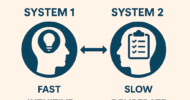The New York Times recently published a front page story by William J. Broad, “Billionaires with Big Ideas Are Privatizing American Science.” The piece drew nearly 500 comments on the Times’ website in 24 hours, debating the pros and cons of philanthropic support for research.
Philanthropic investment in research is most welcome, but I was struck that this story made the front page, over a much less flashy yet far more important story: that the nation’s entire biomedical research enterprise may be in peril from a lack of federal investment. However generous, philanthropy cannot begin to substitute for a national commitment to medical research.
Between 1998 and 2003, the federal government essentially doubled the funding for biomedical research through appropriations made to the National Institutes of Health (NIH), the largest funder of basic biomedical science in the world. That significant investment led to breakthroughs in the diagnosis or treatment of many diseases in the past decade that were derived from basic science funded, at least in part, by the NIH.
Basic science is a high-risk investment. It can be serendipitous and unpredictable, and requires a large upfront commitment of time and energy. Some of the most major breakthroughs begin with small, unglamorous steps that require unimaginable commitment of time and energy, yet can eventually result in innovative new diagnostics, treatments, and sometimes cures.
As one example, in the 1960s, Dr. Osamu Shimomura and colleagues examined the properties of bioluminescence — the biochemical emission of light by living organisms — in jellyfish. He asked the question: How do these organisms biochemically emit light? An interesting question, although it would hardly have made the front page of the New York Times, or otherwise garnered much attention. The team identified a key protein, named aequorin, and elucidated how it worked chemically to make light emission possible. The finding eventually led to the identification of “green fluorescent protein” or GFP.
Shimomura did not work alone; other investigators made critical contributions to developing GFP as a biochemical marker that makes it possible to monitor gene expression and track the resultant protein movement within individual cells. GFP is now one of the most widely used scientific tools, enabling many other remarkable discoveries of how genes, proteins and cells function in health and disease. For the development of GFP, Shimomura and others were awarded the 2008 Nobel Prize in Chemistry, nearly five decades after his original discovery.
I have previously noted my favorite example. Dr. Elizabeth Blackburn and collaborators performed experiments, more than three decades ago, on Tetrahymena (or “pond scum”), a single-celled protozoan,to answer a fundamental question: How do cells overcome an inherent biological step that shortens their DNA molecules each time the cell undergoes normal replication? Given this phenomenon, the strand of DNA could become so short with repeated cell divisions that part of the genetic blueprint would be lost, and humans would lose their ability to develop normally. Another interesting question, but the future impact on medicine and science was still to come.
As it turns out, discoveries made using this seemingly unremarkable pond-dwelling organism uncovered the existence of a protective cap on the ends of the pieces of DNA, “telomeres,” that essentially protects the DNA during cell division. That discovery triggered thousands of additional experiments in laboratories around the world that continue to this day. And because of those studies, each one building on prior work, we have an advanced understanding of cells that serves as the basis for innovative treatments for neurodegenerative disorders and cancer. Dr. Blackburn and her colleagues were awarded the Nobel Prize in Physiology or Medicine in 2009.
Those are two examples. There are thousands of others. Based on current investment trends, it is unlikely that philanthropic donors or private sector research and development would have been interested in funding the original exploratory research on pond scum. Historically, the federal government has been the primary funder of this sort of high-risk basic science, because of both the proximal outcomes — fundamental discoveries that lead to clinical breakthroughs — and the distal outcomes — a stronger, more competitive and productive nation. These basic breakthroughs taking place in laboratories across the nation, and the public support that makes them possible, rarely are covered in the news or seen in the public eye.
Despite vocal bipartisan support for fundamental biomedical research, the commitment to federal funding does not match the rhetoric. We are now in the middle of an “un-doubling” of the NIH budget. In 2014, the federal appropriations for NIH — while nominally about $30 billion — is closer to the year 2000 level ($20 billion) when inflation and costs of doing research are considered. This year’s appropriation fell far short of simply breaking even with 2012. As a result, there are far fewer NIH-funded research project grants. Some of the brightest scientists in the nation have lost federal support and are shutting down their laboratories and laying off skilled technicians, unable to support their research teams and forced to put bold new ideas on hold. Even the most committed of our younger scientists are thinking twice about beginning a career in research in the public interest. This lost momentum and collapse of research infrastructure stifles potential breakthroughs from high-risk basic science that will take decades to recover, or may not be salvageable at all.
All this leads to one question: Now what? As the GFP and pond scum stories illuminate, we can start by turning our basic science breakthroughs into headlines that will captivate the public, and better explain the time lag between discoveries and clinical translation. But most important, we should rethink altogether how Congress allocates funds for biomedical research.
Current funding for NIH is in the discretionary spending category, which makes it subject to an annual appropriations process by Congress. What if Congress, while honoring the annual appropriations process, committed to a multi-year, predictable, modest increase in funding for biomedical research? The relative risk of committing to a steadily increasing funding scheme over the current annual appropriations process, which has resulted in the sobering and unrelenting decline in federal dollars, seems quite low — especially when considering the impacts of federal support on the health of our citizens who make our nation more productive, more competitive, and more innovative.
So let’s not be diverted into arguing the pros and cons of philanthropic funding for research. Instead, let’s focus on preserving the much larger and essential public investment that saves lives.
Ann C. Bonham is chief scientific officer, Association of American Medical Colleges. She blogs at Wing of Zock.






















![Addressing America’s reliance on psychotropic medication [PODCAST]](https://kevinmd.com/wp-content/uploads/Design-2-190x100.jpg)

